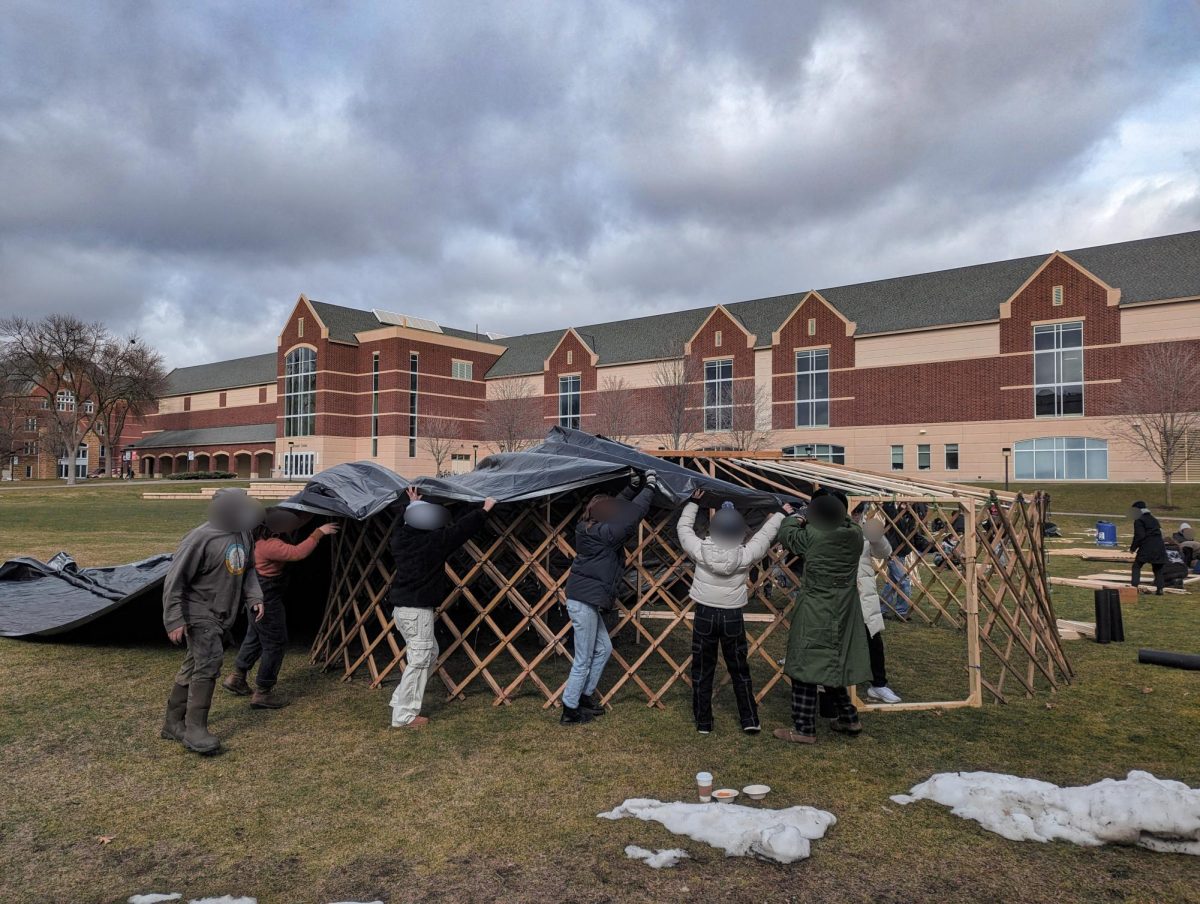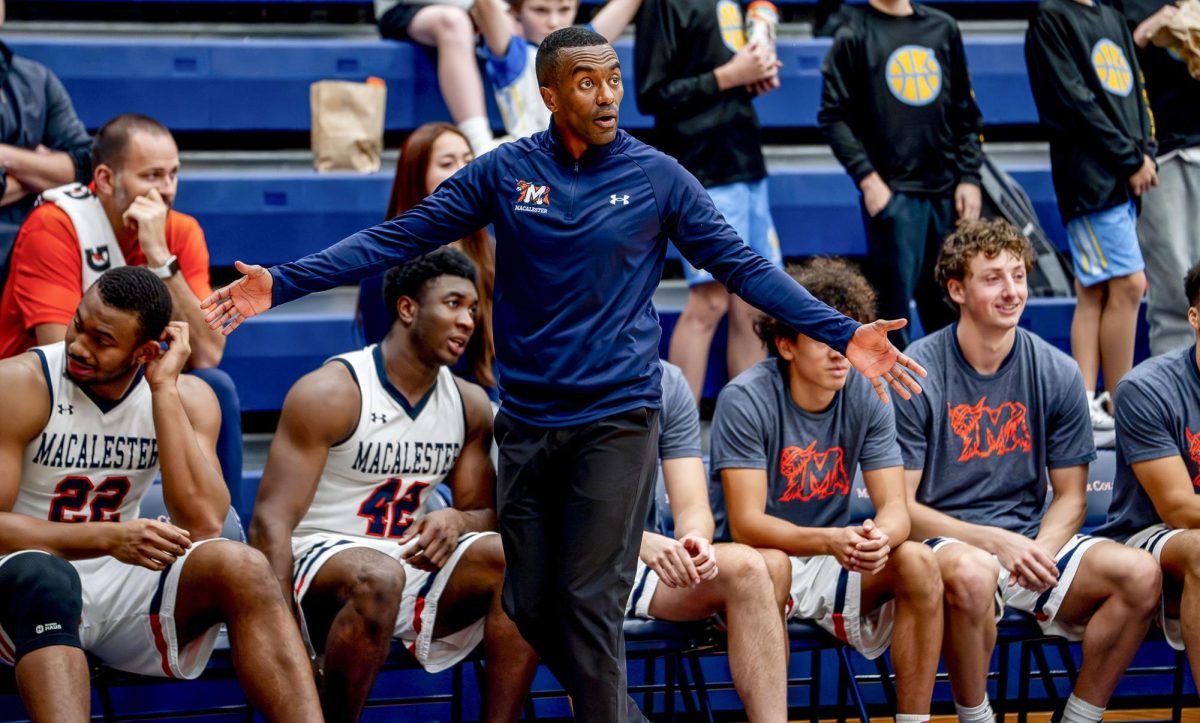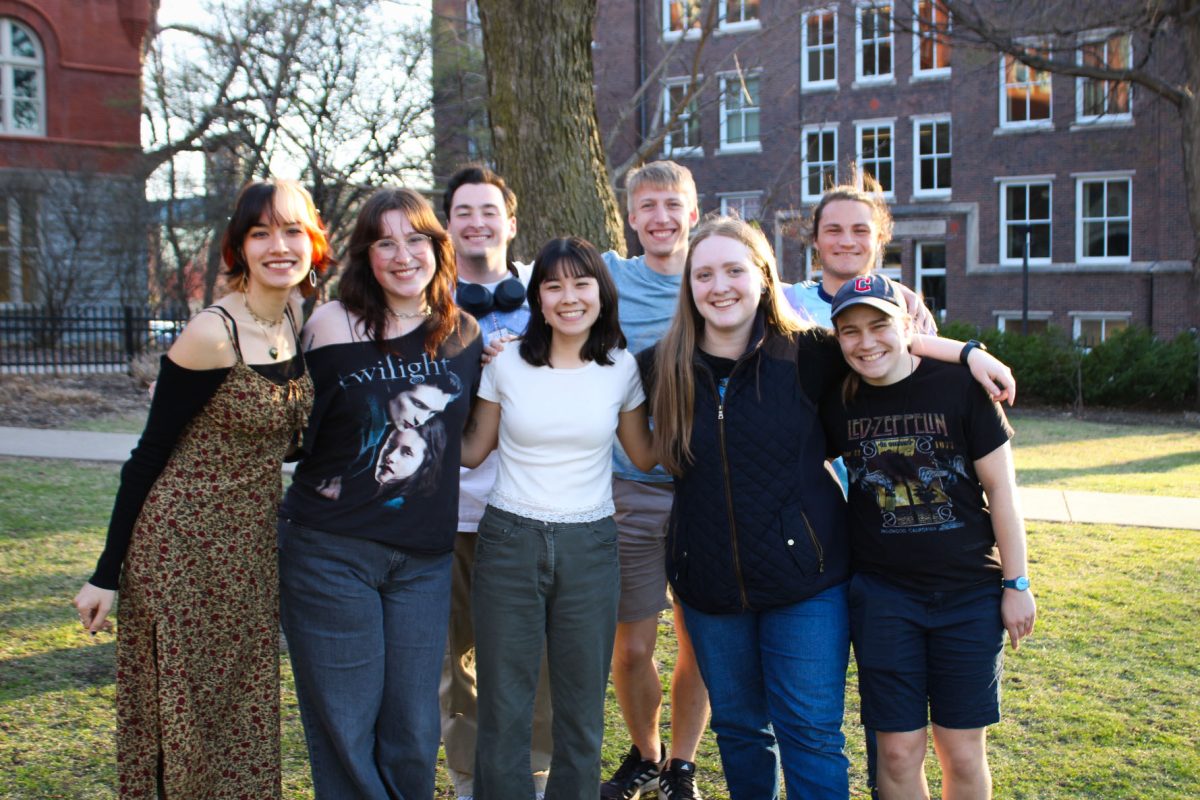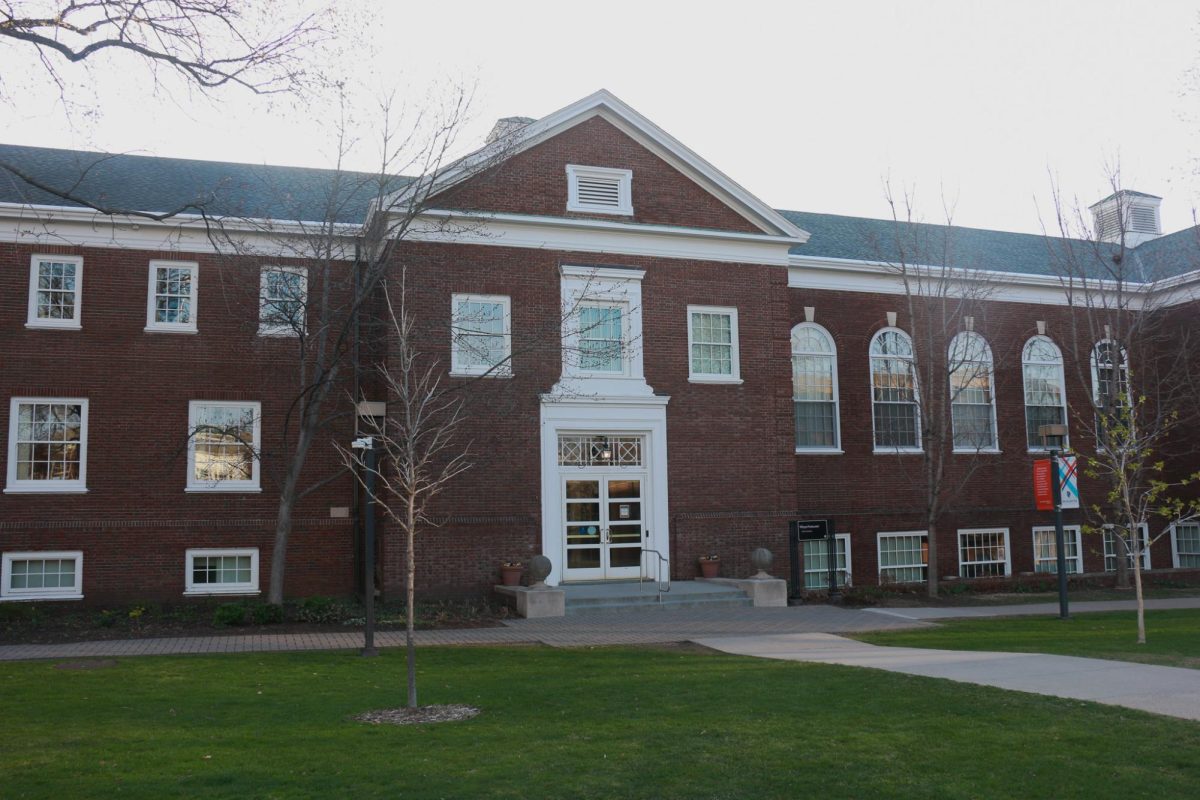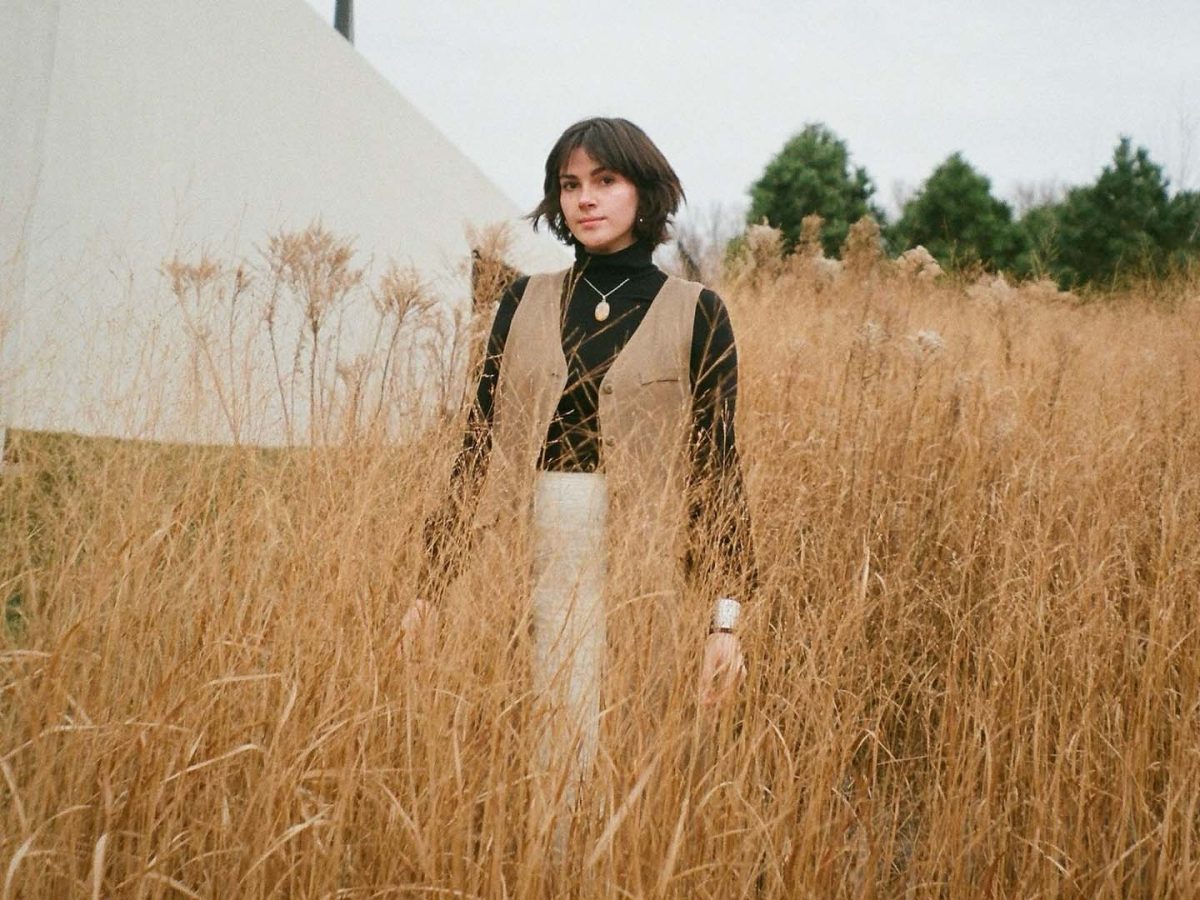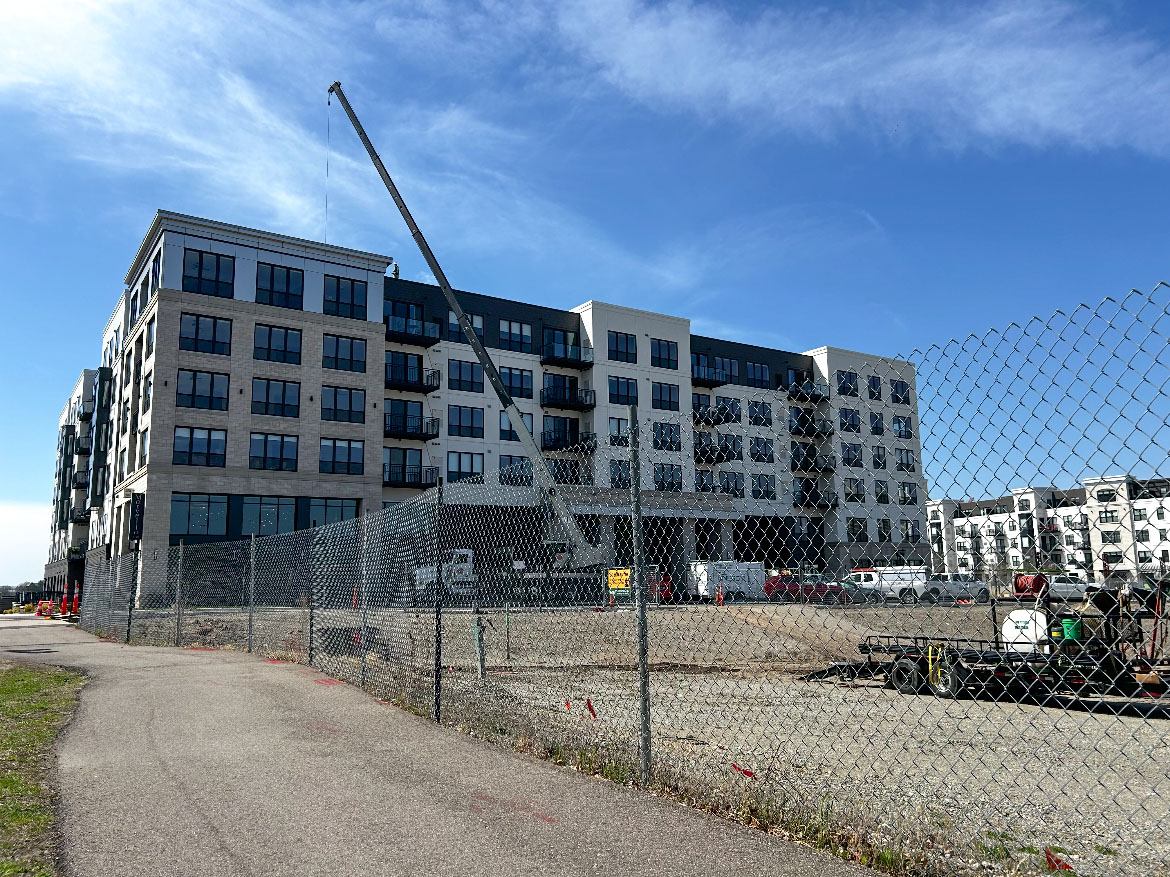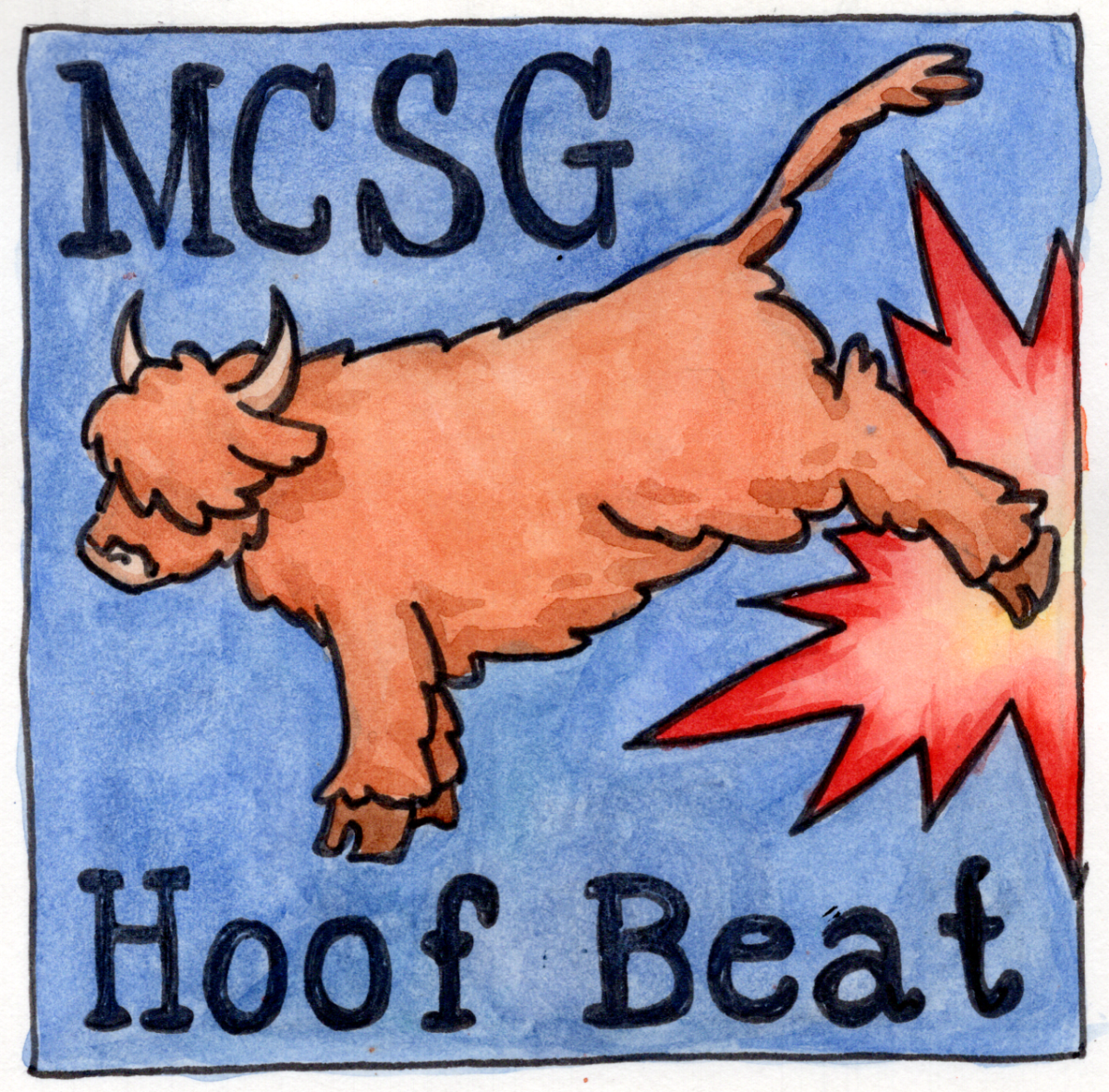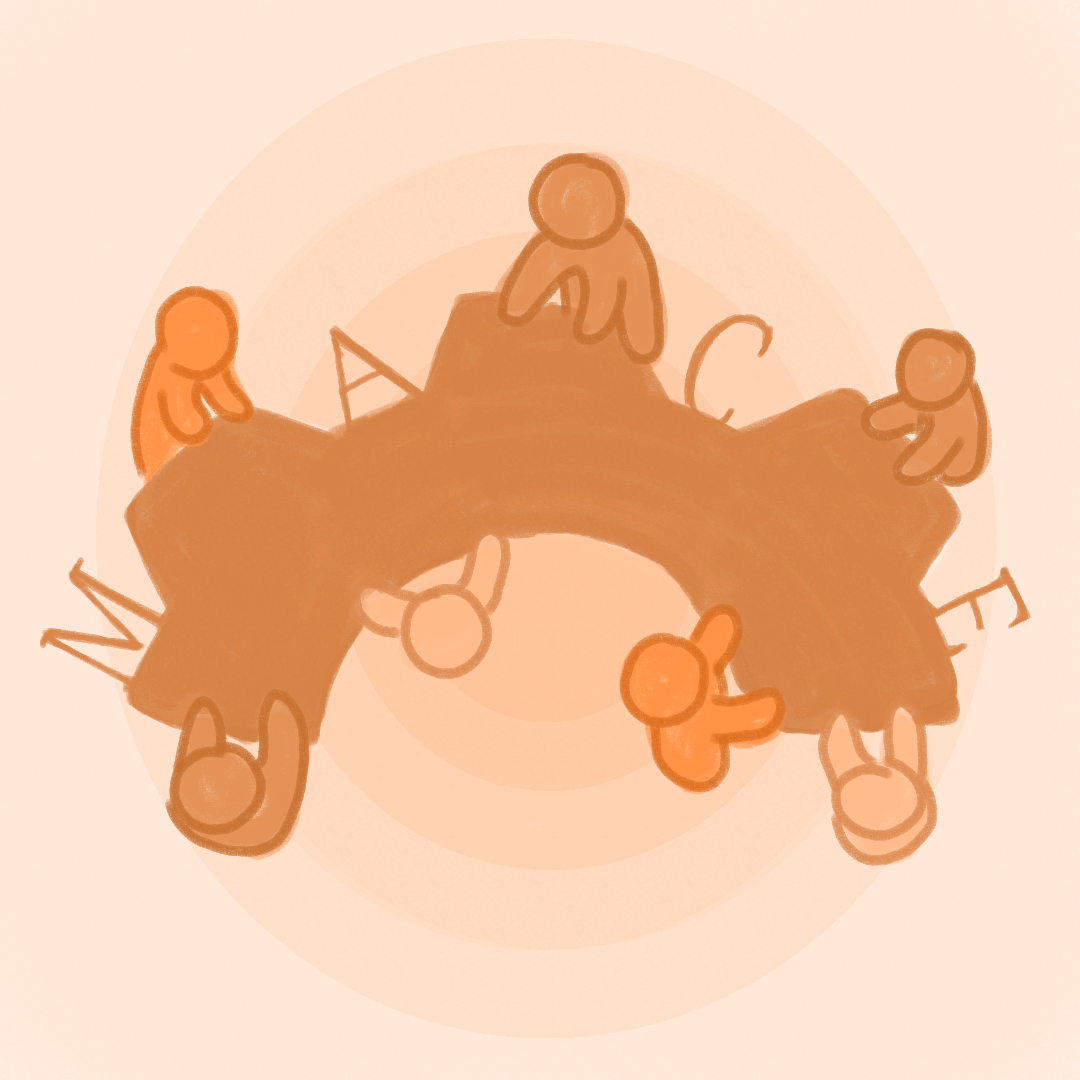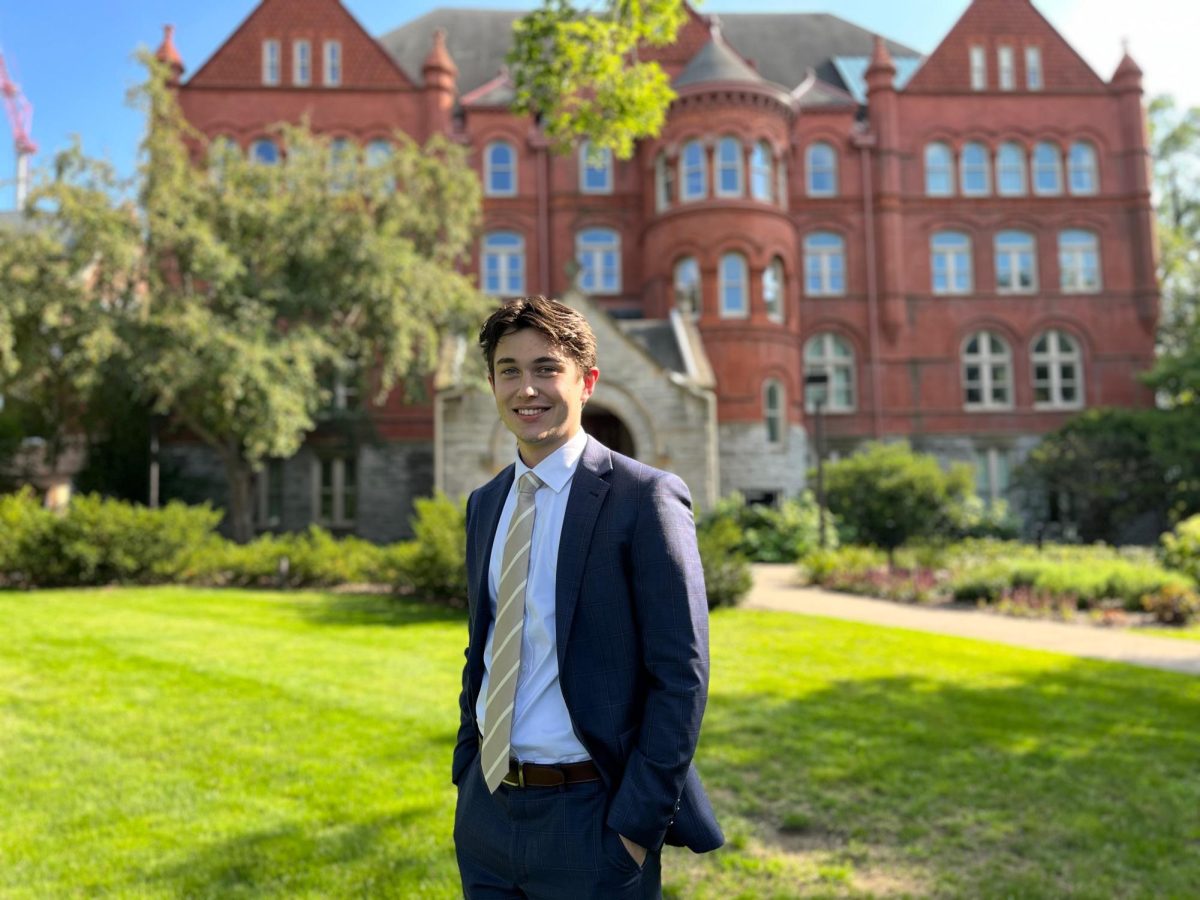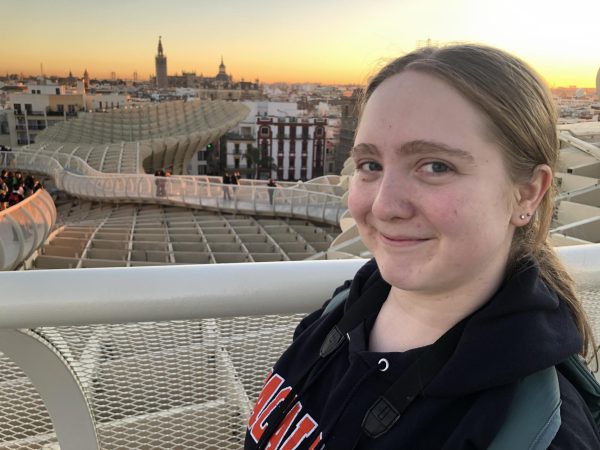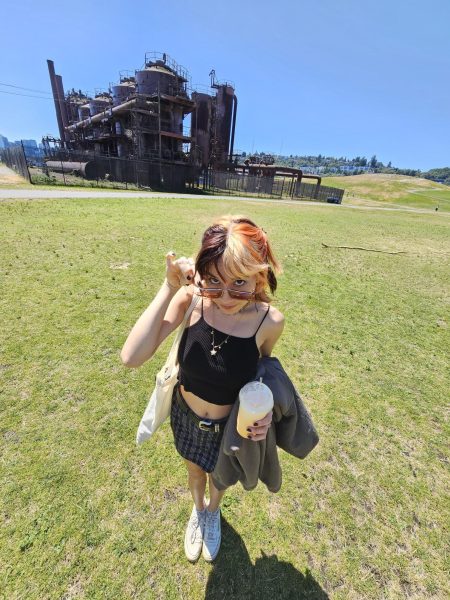Students may have wondered about the big black dome that popped up outside of Olin- Rice Science Center last week. Short answer: It was a yurt.
The yurt was part of a larger effort in honor of Climate Justice Week from April 1-5. Worldwide
Climate and Justice Education Week is a project of Bard College in New York, which invites participating campuses to engage with the titular topics. This is the third year Macalester organized events for Climate Justice Week, largely thanks to Environmental Studies Professor Roopali Phadke, one of the main organizers.
Beyond the yurt, these events included a poetry reading, a book launch, a documentary screening and even the setting up of a temporary sauna outside of Janet Wallace Fine Arts Center.
On Tuesday, students worked to build the yurt in conjunction with the Autonomous Yurt Union (AYU), a community organizing group that builds yurts for unhoused people in the Twin Cities area, particularly people within the Indigenous community. The Shaw Field yurt will go to a transient camp to house people in the coming months.
“A lot of us find it flatly unacceptable that Native people don’t have safe, warm shelter on their own homelands,” Ash, an AYU organizer who did not provide their last name out of security conerns, said. “That’s where this comes from, and we say ‘no’ to that. We’re doing something about it. The city doesn’t want to, but we will. … A general goal is to share the knowledge we have and skills that we have with each other and build collective power.”
Students across campus, including those enrolled in “Alone Together: The Contradictions of Social Media,” taught by professor John Kim of the media and cultural studies (MCST) department, worked alongside representatives from AYU to erect the structure. Students involved in the yurt construction emphasized how working on it was a chance to put the concepts of collective action to work.
“Now you’re actually feeling what it feels like to take part in something bigger than you,” Felix Sun ’26 said. “It’s really fun having your classmates, who were in discussions providing ideas and arguments, now [be] people hammering stuff.”
Speaking on the connection between yurts and climate justice, Kim shed light on the responsibility community members have to each other in tackling crises that the local government does not prioritize.
“The growth of unhoused communities in the Twin Cities and around the country is one of these crises of the habitability of the Earth, which has a lot to do with this history of colonization and dispossession in this region,” Kim wrote in an email to The Mac Weekly. “As advocates like to say, there wasn’t private property before settlers arrived to North America. … Building yurts is a collective effort to help address the issue in ways that local government has been unable to.”
The sauna sessions were open to students, faculty and staff. Part of artist-in-residence Stephanie Lindquist’s project called “Sweat Together,” the sauna takes inspiration from sauna and steam traditions from around the world and incorporates them into community healing and into providing relief for climate organizers.
“This sweating together is therapeutic; it is healing; it helps to unload the challenges of the world,” Phadke said.
On Thursday, the weekly EnviroThursday talk showcased the writing of poet Claire Wahmanholm. Author of poetry collections, including “Wilder and Redmouth,” Wahmanholm read some poems from her most recent publication “Meltwater.”
Wahmanholm, who describes her writing as “devastating,” explained how she expresses fear, anxiety, pain and hope around climate change through her poetry. She intends to invoke these feelings in her readers to inspire action.
“I think one thing that poetry is really good for, especially when you’re working with something like a climate crisis, is shocking people out of numbness or apathy and really raising the stakes and making them more urgent,” Wahmanholm said.
Later on Thursday, the MCST department welcomed Shana M. griffin, a New Orleans-based artist, to give the annual Leola Johnson Lecture in honor of Professor Emeritus Leola Johnson, one of the founding faculty members of the department.
In the talk, entitled “Black Feminist Geographies, Insurgent Ecologies Cartographic Reimagining Along the Mississippi River,” griffin chronicled the experiences of Black women in the face of a slew of issues, including poverty, incarceration and polluted environments. She highlighted her various projects, including “DISPLACED” and “SOIL.”
“My practice is primarily motivated and informed by several key things, and, chief among them, is the neighborhood where I grew up,” griffin said. “The women who I witnessed engage in decades-long housing advocacy, whose activism have regularly been ignored and marginalized because of their race, because of their gender and their subsidy status as public housing residents.”
On Thursday night, the Sustainability Office hosted a film screening of “The True Cost,” a documentary that analyzes fast fashion’s damaging effects on the environment and the workers who make the clothes.
This year’s Climate Justice Week concluded with a book launch of “Even the River Starts Small: A Collection of Stories from the Movement to Stop Line 3,” a collection of submitted stories from various creatives impacted by Line 3 and involved in climate activism. The book reflects on diverse experiences from the resistance movements against Line 3 through writing, art and photography.
Phadke reflected on the week of activities, pointing out how this year’s Climate Justice Week shifted its focus from previous years at Mac.
“Last year, the climate justice teaching was much more focused on faculty and their courses,” Phadke said. “This year, we wanted to take it outside of the classroom, so a lot of the activities were physically outside. They were also focused on the edges… We were trying to activate other ways of knowing in other kinds of environments, leaning into the arts, literature and spirituality.”
In integrating a wider range of disciplines, Climate Justice Week offered a chance for participants, especially students, to interact with the environment in a different way. This shift allowed for greater collaboration and was overall seen as a success, according to Phadke.
“We were trying to bring in new students, new departments, new parts of campus and parts of the community, so I think that was really successful, and I’d love to think about how we might do more of that in the future,” Phadke said.

